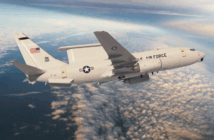Welcome to the CavasShips Podcast with Christopher P. Cavas and Chris Servello…a weekly podcast looking at naval and maritime events and issues of the day – in the US, across the seas and around the world. This week…Books books books – We’ve all certainly learned a lot from reading books. But what is the future of the hard-copy, printed volume? We’ll talk with one of the most well-known and prolific naval authors of our time, Norman Friedman.
Please send us feedback by DM’ing @CavasShips or @CSSProvision or you can email chriscavas@gmail.com or cservello@defaeroreport.com.
This Week’s Naval Round Up:
Chinese ships and aircraft continue to operate and encircle Taiwan, the island nation’s ministry of defence said Nov. 21. Ten Chinese aircraft and three naval ships were being tracked by the Taiwan military, which claimed that as of that point a total of 339 Chinese aircraft and 56 naval ships had operated within the country’s air and sea defense identification zones.
The French Navy took delivery of its last FREMM frigate on November 16. The LORRAINE is the eighth FREMM frigate overall for the French Navy and one of two air defense variants. The two air defense frigates will be primarily assigned as escorts for the carrier CHARLES DE GAULLE and the French Navy’s three assault ships.
And as we speak the carrier USS GERALD R FORD is to return to Norfolk November 26 after a shakedown deployment lasting just under seven weeks. The FORD’s first cruise with an embarked air group and a multinational strike group featured several exercises as week as port calls to Halifax, Nova Scotia and Portsmouth, England. After a maintenance period, the FORD will begin workups next year for an expected full six- or seven-month deployment, probably to the European theater of operations. One indicator of the shakedown deployment’s success might be the headline November 18 in the Times of London as the ship was visiting Portsmouth – “Welcome aboard USS Badass – the world’s biggest warship.”
A new acronym regarding the US Navy’s big Zumwalt-class destroyers has appeared – ZEUS, for Zumwalt Enterprise Upgrade Solution. The ZEUS upgrades – which appeared in a government notice November 17 seeking sources for the program, seeks to replace existing unique systems and components on the ships with systems more like those on other Navy surface combatants. The first-in-class ZUMWALT is scheduled to enter a shipyard near the end of 2023 for a major upgrade that will include the installation of launch tubes capable of firing hyper-sonic weapons.
Cavas Squawk:
There is no question that over the past three decades or so social media has changed how we communicate and gather information. YouTube, Facebook, Twitter, Snapchat, Instagram, TikTok, WhatsApp and others all have their own unique formats. Wikipedia, which relies essentially on crowdsourcing, has become the generic all-purpose reference work. Ereaders and tablets provide easy, lightweight devices that allow anyone to carry thousands of books anywhere they go, in digital form. Even better – digital documents are searchable. All these formats have their own advantages.
But you know, you also have to know what to search for, and there remains something to be said about the old-fashioned, hard-copy printed book. We’ve just heard from one of the most prolific and accomplished writers on naval affairs anywhere. While Norman Friedman has put out his fair share of histories – works that transfer rather easily to digital form – he has also produced a few dozen indispensable technical histories that do not – in my opinion – reproduce well on a digital screen. As we noted, Friedman’s works are published on several levels – there is a main narrative, there are lavish illustrations with extensive and detailed captions not repeated in the narrative, and there are almost always several appendices providing, for example, such things as lists of ships with many of their particulars. You don’t just read a Norman Friedman design history – you study it. In detail, Over and over. And that’s something that I don’t think reproduces well in digital form.
Facebook, for example, features thousands of news groups, many on naval topics. I’m routinely impressed by the numbers of people interested in such things. I’m also impressed in how they simply don’t know things. I notice how many people frequently cite the well-done videos on YouTube by a user calling himself Drachinifel. It’s good amateur stuff, presented in easily-digestible form, and he’s built a considerable and well-deserved following.
But where do you think Drachinifel gets his information? I’ll give you a hint – it’s in books. Lots of books. Not just books currently in print or for sale on Amazon, but books that are long out of print, many hard to find, obscure yet valuable. Books that are nowhere to be found in digital form. Books that are based on primary records, from the actual source of information, not relying on secondary sources – which is what the vast majority of websites and videos rely on.
I admit to being disappointed at the near-disappearance of the large, well-stocked book store – something that was thriving until the past decade or so. I note the dwindling number of really good used bookstores full of treasures. The fine art of browsing hundreds of books looks like an endangered species.
I’ve tried to embrace the digital age as much as anyone in my age group – but I don’t think I’ll ever give up the good, old-fashioned, hard-copy, page-turning printed book.




